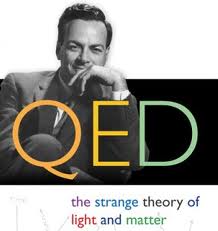why we believe in god(s)
By: J. Anderson Thomson, Jr., MD
with Clare Aukofer
BUY NOW
ISBN: 978-098449321-0
Thanks to the Skeptic Society I had the privilege of meeting Dr. J. "Andy" Thomson and had my book signed at his Cal Tech lecture.
Description from back of book: In this groundbreaking volume, J. Anderson Thomson, Jr., MD, with Clare Aukofer, offers a succinct yet comprehensive study of how and why the human mind generates religious belief. Dr. Thomson, a highly respected practicing psychiatrist with credentials in forensic psychiatry and evolutionary psychology, methodically investigates the components and causes of religious belief in the same way any scientist would investigate the movement of astronomical bodies or the evolution of life over time - that is, as a purely natural phenomenon. Providing compelling evidence from psychology, the cognitive neurosciences, and related fields, he, with Ms. Aukofer, presents an easily accessible and exceptionally convincing case that god(s) were created by man - not vice versa. With this slim volume, Dr. Thomson establishes himself as a must-read thinker and leading voice on the primacy of reason and science over superstition and religion.
J. Anderson "Andy" Thomson, Jr., MD, is a staff psychiatrist at the University of Virginia's Student Health Center and Institute of Law, Psychiatry and Public Policy, and maintains a private practice of adult and forensic psychiatry. He serves as a trustee of the Richard Dawkins Foundation for Reason and Science. Clare Aukofer is a medical writer who has collaborated with Dr. Thomson on several projects.
....and another...
QED: The Strange Theory of Light and Matter
By: Richard Feynman
BUY NOW
ISBN-10: 0691024170
ISBN-13: 978-0691024172
Book description from Amazon.com: Famous the world over for the creative brilliance of his insights into the physical world, Nobel Prize-winning physicist Richard Feynman also possessed an extraordinary talent for explaining difficult concepts to the nonscientist. QED--the edited version of four lectures on quantum electrodynamics that Feynman gave to the general public at UCLA as part of the Alix G. Mautner Memorial Lecture series--is perhaps the best example of his ability to communicate both the substance and the spirit of science to the layperson.
The focus, as the title suggests, is quantum electrodynamics (QED), the part of the quantum theory of fields that describes the interactions of the quanta of the electromagnetic field-light, X rays, gamma rays--with matter and those of charged particles with one another. By extending the formalism developed by Dirac in 1933, which related quantum and classical descriptions of the motion of particles, Feynman revolutionized the quantum mechanical understanding of the nature of particles and waves. And, by incorporating his own readily visualizable formulation of quantum mechanics, Feynman created a diagrammatic version of QED that made calculations much simpler and also provided visual insights into the mechanisms of quantum electrodynamic processes.
Thursday, February 23, 2012
Tuesday, February 14, 2012
Just a little something I try to keep in mind as I go through the actions of the day....
This is narrated by the late great Alen Watts and animated by Trey Parker and Matt Stone. Thanks to OurTVproductions for posting this video on YouTube.
This is narrated by the late great Alen Watts and animated by Trey Parker and Matt Stone. Thanks to OurTVproductions for posting this video on YouTube.
Subscribe to:
Posts (Atom)

